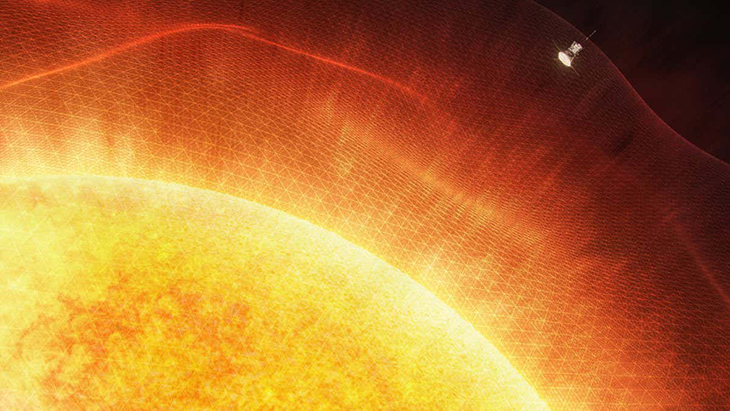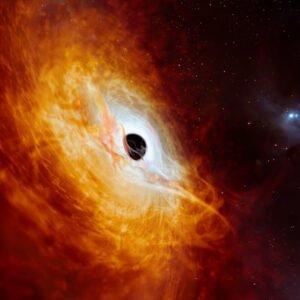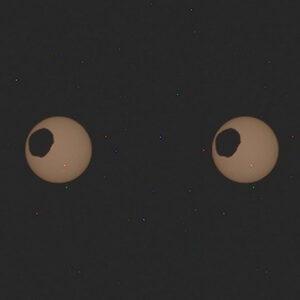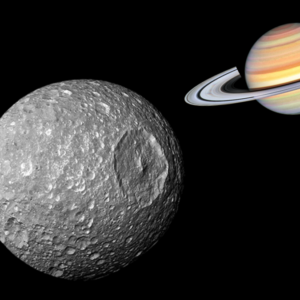
It may sound crazy but while the inception of the Parker Solar Probe took decades, it was yet another three years after it was finally launched before it managed to pass into the solar atmosphere and get close to the sun. Moreover, it is also the first to have come the closest to the massive hot ball of glowing gases that powers our beloved planet Earth.
Although there have been claims that the probe “touched the sun,” they have been misleading at best. But the fact that the probe managed to enter the Sun’s atmosphere is incredible already, considering that no other probe had ever gotten that far. Plus, it managed to give almost immediate data on solar winds and solar magnetism, both of which could have never been taken all the way from Earth.
It was on April 28 when the Parker probe managed to get past the Alfvén critical boundary. Although the sun doesn’t actually have a surface, the rolling material found inside the sun is kept intact via a magnetic field and gravity, yet the pressure and heat also push some of that material further out.
As the material gets pushed out or ejected, it’s then classified as the “solar wind,” which is the ‘highly energetic solar material that leaves the Sun in a zig-zag pattern, and moves so fast that it passes the boundary and arrives at Earth in the form of radiation.’
Before the Parker Solar Probe, scientists had no clue to where the Alfvén critical boundary was. But as the probe continued to orbit the sun, it was on the eighth revolution when it passed a point close to 8.1 million miles from the surface where the particle and magnetic data changed. This is what notified the scientists that the probe had passed through the boundary and managed to come within the Sun’s atmosphere, otherwise known as the corona.
Justin Kasper, who happens to be the lead author on the recent paper that was published in Physical Review Letters that talks about this massive milestone said, “We were fully expecting that, sooner or later, we would encounter the corona for at least a short duration of time.”
Just after the first entry into the sun’s atmosphere, the Parker probe passed in and out many times, verifying that other than having a smooth sphere, it was actually bent and wrinkled depending on the pressures coming off of the sun. Because of this, it allows scientists to better understand how the events on the surface actually impact this so-called boundary in order to comprehend solar wind and the way it actually alters or influences the solar system.
Amazingly, there was one distinct moment while the Parker probe was in orbit to around 6.5 million miles from the sun’s surface where it managed to capture images of a pseudostreamer, which are massive columnar structures that exceed the suns’ surface and make up the impressive tentacle-like shapes that are seen billowing from the sun during a total solar eclipse.
The report also shared how the pseudostreamer acted like a storm system where while the center had mostly quiet conditions, the outer edges were extremely active.
In order to understand this better, take a look at the video below:
Even more impressive, the Parker probe is now considered the fastest thing that was ever built by humans. That’s because in order for it to avoid being completely melted by the massively intense heat of the sun, it had to travel at 320,000 miles per hour. Meanwhile, it’s heat shield – which protects the instruments located inside the machine – managed to withstand or avert heat of up to 2,500°F, or 1,400°C.
Back in 2019 when the Parker first managed to enter the edge of the Alfvén critical boundary environment was when the machine identified the emergence of the zig-zag pattern of the solar wind. But it was on the 6th orbit of the sun where this zig-zag motion was caught in action and the data was collected by the probe. The zig-sags are actually known as switchbacks, which occur in patches and have a higher percentage of helium which come from the photosphere, or the surface of the sun.
Because of this, the switchbacks’ origins were even better understood after the scientists found that ‘the patches aligned with magnetic funnels that emerge from the photosphere called supergranules.’ This discovery of these supergranules is truly groundbreaking since scientists believe that this could be the actual origins of the solar wind in the first place.In the next few years to come, the Parker will continue to move in and out of the corona as it takes readings, and the hope is that it will eventually reach 3.8 million miles from the surface at one point.
According to division director for the Heliophysics Division at NASA Headquarters, Nicole Fox, “I’m excited to see what Parker finds as it repeatedly passes through the corona in the years to come. The opportunity for new discoveries is boundless.”
You can take a look at the video below to see more.
What are your thoughts? Please comment below and share this news!
True Activist / Report a typo


